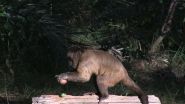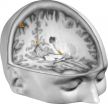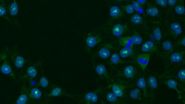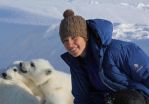Mammals not the only animals to feed embryo during gestation
New study changes the way we look at mother/embryo relationship
2015-04-30
(Press-News.org) How and when does mom feed her embryo? We humans, like most mammals, experience pregnancy where a mother supplies nutrition directly to the embryo as it develops. But we're in the minority.
Most members of the animal kingdom supply eggs with nutritious yolk before they are fertilized. With this yolk supply, fertilized eggs develop as embryos in the environment outside the mother's body. For over a century, the scientific understanding of matrotrophy ("mother-feeding") of an embryo developing inside a mom's body has come from vertebrate animals, especially mammals like us. This process was thought to be infrequent among the other 33 or so major groups or phyla of animals. Not so, according to a major study published today in the journal Biological Reviews.
Scott Lidgard at Chicago's Field Museum and Andrey Ostrovsky at St. Petersburg State University led the international team that reports matrotrophy has evolved in at least 21 of 34 animal phyla. By comparing the examples of matrotrophy with the placement of species on the DNA-based tree of life, the authors propose that matrotrophy has evolved independently in 140 or more different animal lineages, and is often associated with live birth. According to the study, previous work scattered through the specialized scientific literature had talked about matrotrophy in many invertebrate groups, but it had never been appreciated just how common it might be, and how frequently it had evolved. There are more species of flatworms that employ mother-feeding than there are species of mammals!
The repeated shifts from ancestors whose embryos depended entirely on yolk to descendants in which moms supply nutrients directly, either partly or wholly supplanting yolk, is only part of the story. Animals have evolved a host of different mechanisms for carrying out the job of feeding the embryo: direct transfer with intimate cellular contact as in placental mammals, uterine "milk glands" in scorpions and some insects, nutrient secretion into fluid-filled body cavities where embryos are freely suspended, accelerated development of embryo digestive tracts that allows feeding on maternal tissues, even cannibalism of sibling eggs or embryos.
Mechanisms among invertebrate animals are less complex than among vertebrates, but are more diverse. We know a lot, for example, about what enables a human baby with a different genotype than its mother to develop in intimate contact with the placenta without triggering an attack by mom's immune system on the "foreign" body. How have independently evolved modes of mother-feeding in different animal groups eluded or accommodated dangerous immune responses?
Many of the invertebrate groups with matrotrophy remain stuck on the ocean floor for most of their lives, or are parasites that live part or most of their existence inside other host organisms. Vertebrates have neither of these life histories. If matrotrophy has evolved dozens or hundreds of times among distantly related animal groups, what factors of animal physiologies, life histories, and environments have shaped the course of natural selection? The sheer diversity of mothers feeding embryos shown by this study points toward a whole range of scientific questions for which animals other than mammals may hold the keys.
INFORMATION:
ELSE PRESS RELEASES FROM THIS DATE:
2015-04-30
The latest Special Issue from ecancermedicalscience is dedicated to the memory of our late friend, Dr Mario Sideri.
The Special Issue, "Prevention of gynaecological cancers: in memory of Mario Sideri," consists of nine articles centred around Dr Sideri's favoured research topic.
Dr Sideri was one of the first doctors in the world to identify the connection between the human papillomavirus (HPV) and cervical cancer.
He served as the Director of the Preventive Gynecology Unit at the European Institute of Oncology (IEO) in Milan from 1994 until his tragic death in June ...
2015-04-30
When it comes to cracking nuts, wild bearded capuchin monkeys are more skilled than anyone had given them credit for, according to researchers who report new findings in the Cell Press journal Current Biology on April 30.
The monkeys are known to use stone "hammers" to crack nuts. The new study shows that the monkeys are quite careful about the amount of force delivered to those nuts. They adjust the force applied with each strike based on the condition of the nutshell, making it less likely that they'll end up smashing the tasty kernel inside.
"Wild bearded capuchin ...
2015-04-30
Bats are masters of flight in the night sky, capable of steep nosedives and sharp turns that put our best aircraft to shame. Although the role of echolocation in bats' impressive midair maneuvering has been extensively studied, the contribution of touch has been largely overlooked. A study published April 30 in Cell Reports shows, for the first time, that a unique array of sensory receptors in the wing provides feedback to a bat during flight. The findings also suggest that neurons in the bat brain respond to incoming airflow and touch signals, triggering rapid adjustments ...
2015-04-30
Neuroscientists have perfected a chemical-genetic remote control for brain circuitry and behavior. This evolving technology can now sequentially switch the same neurons - and the behaviors they mediate - on-and-off in mice, say researchers funded by the National Institutes of Health. Such bidirectional control is pivotal for decoding the brain workings of complex behaviors. The findings are the first to be published from the first wave of NIH grants awarded last fall under the BRAIN Initiative.
"With its new push-pull control, this tool sharpens the cutting edge of ...
2015-04-30
The feeling of being inside one's own body is not as self-evident as one might think. In a new study from Sweden's Karolinska Institutet, neuroscientists created an out-of-body illusion in participants placed inside a brain scanner. They then used the illusion to perceptually 'teleport' the participants to different locations in a room and show that the perceived location of the bodily self can be decoded from activity patterns in specific brain regions.
The sense of owning one's body and being located somewhere in space is so fundamental that we usually take it for granted. ...
2015-04-30
First study to show pattern of telomere changes at multiple time points as cancer develops
Telomeres can look 15 years older in people developing cancer
Pattern suggests when cancer hijacks the cell's aging process
CHICAGO -- A distinct pattern in the changing length of blood telomeres, the protective end caps on our DNA strands, can predict cancer many years before actual diagnosis, according to a new study from Northwestern Medicine in collaboration with Harvard University.
The pattern -- a rapid shortening followed by a stabilization three or four years before ...
2015-04-30
Rochester, Minn. -- Over the last decade, numerous studies have shown that many Americans have low vitamin D levels and as a result, vitamin D supplement use has climbed in recent years. Vitamin D has been shown to boost bone health and it may play a role in preventing diabetes, cancer, cardiovascular disease and other illnesses. In light of the increased use of vitamin D supplements, Mayo Clinic researchers set out to learn more about the health of those with high vitamin D levels. They found that toxic levels are actually rare.
Their study appears in the May issue of ...
2015-04-30
LA JOLLA--Stem cells, which have the potential to turn into any kind of cell, offer the tantalizing possibility of generating new tissues for organ replacements, stroke victims and patients of many other diseases. Now, scientists at the Salk Institute have uncovered details about stem cell growth that could help improve regenerative therapies.
While it was known that two key cellular processes--called Wnt and Activin--were needed for stem cells to grow into specific mature cells, no one knew exactly how these pathways worked together. The details of how Wnt and Activin ...
2015-04-30
Many human communities want answers about the current status and future of Arctic marine mammals, including scientists who dedicate their lives to study them and indigenous people whose traditional ways of subsistence are intertwined with the fate of species such as ice seals, narwhals, walruses and polar bears.
But there are many unknowns about the current status of 11 species of marine mammals who depend on Arctic sea ice to live, feed and breed, and about how their fragile habitat will evolve in a warming world.
A recently published multinational study attempted ...
2015-04-30
AUSTIN, Minn. (4/30/15) - Taking aspirin reduces a person's risk of colorectal cancer, but the molecular mechanisms involved have remained unknown until a recent discovery by The Hormel Institute, University of Minnesota.
Researchers led by The Hormel Institute's Executive Director Dr. Zigang Dong and Associate Director Dr. Ann M. Bode, who co-lead the Cellular & Molecular Biology section, discovered that aspirin might exert its chemopreventive activity against colorectal cancer, at least partially, by normalizing the expression of epidermal growth factor receptor (EGFR) ...
LAST 30 PRESS RELEASES:
[Press-News.org] Mammals not the only animals to feed embryo during gestation
New study changes the way we look at mother/embryo relationship




